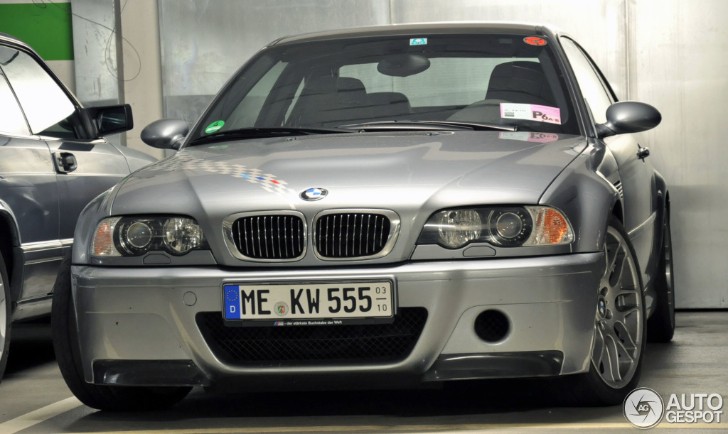Today everyone seems to be nostalgic and all BMW enthusiasts are dreaming of those days when turbocharged engines were reserved for cars that had a ‘d’ on the boot lid. While accepting turbocharged engines for regular cars, when it came to the M models, a mutiny started brewing inside the minds of the brand’s fans.
Now, we have the M4 going around what went ahead, replacing the legendary M3 coupe like it was nothing. Not only that but it confirmed that the naturally aspirated units we got used to are forever gone.
Looking over the spec sheet it’s hard to make a case for atmospheric units. It’s hard to do so for a variety of reasons but all would be forgiven if the new M4 would rise up to the expectations in terms of handling. The reference point? The car we’re showing you in the photo gallery below.
Compared to the standard model, the CSL had numerous lightweight components, as well as a myriad of small changes done to the chassis, drivetrain and even aesthetics. The moniker itself stands for ‘Coupe Sport Lightweight’ just like in 1971, when BMW first used this name with the "Batmobile" E9 CSL.
Only 1,383 units of the E46 M3 CSL were made and all of them feature the famous carbon fiber roof that saves 13 lbs (5.8 kg) alone. The same material was used later on for other cars’ roofs, like the M6 and current M4.
Other parts made of the same material include the front bumper support, the front airdam and the lower rear valance panel. Of course, that wasn’t all BMW did to save weight. The trunk lid is made of sheet molding compound, while fiberglass-reinforced plastic was used to create the rear bumper supports. Finally, the rear window glass is extra thin.
On top of that, the camshafts and exhaust valves were also changed, while the exhaust system itself was replaced with a lighter one that’s made of thinner steel. All these changes gave the plant a total output of 360 HP and 273 lb-ft (370 Nm) of torque which is roughly a 17 HP increase over the stock model. Chip in the weight reduction and you get what we mean when we say that this is a special model.
Looking over the spec sheet it’s hard to make a case for atmospheric units. It’s hard to do so for a variety of reasons but all would be forgiven if the new M4 would rise up to the expectations in terms of handling. The reference point? The car we’re showing you in the photo gallery below.
The BMW E46 M3 CSL
As the name suggests, this was a special edition meant to take handling to a whole new level. As a result, even today enthusiasts sigh every time they see one driving down the street.Compared to the standard model, the CSL had numerous lightweight components, as well as a myriad of small changes done to the chassis, drivetrain and even aesthetics. The moniker itself stands for ‘Coupe Sport Lightweight’ just like in 1971, when BMW first used this name with the "Batmobile" E9 CSL.
Only 1,383 units of the E46 M3 CSL were made and all of them feature the famous carbon fiber roof that saves 13 lbs (5.8 kg) alone. The same material was used later on for other cars’ roofs, like the M6 and current M4.
Other parts made of the same material include the front bumper support, the front airdam and the lower rear valance panel. Of course, that wasn’t all BMW did to save weight. The trunk lid is made of sheet molding compound, while fiberglass-reinforced plastic was used to create the rear bumper supports. Finally, the rear window glass is extra thin.
Under the bonnet
The S54 3.2-liter inline 6-cylinder engine was also upgraded to offer better performance. The mass airflow meter was removed and instead the air draw is determined by the on-board computer for quicker calculations.On top of that, the camshafts and exhaust valves were also changed, while the exhaust system itself was replaced with a lighter one that’s made of thinner steel. All these changes gave the plant a total output of 360 HP and 273 lb-ft (370 Nm) of torque which is roughly a 17 HP increase over the stock model. Chip in the weight reduction and you get what we mean when we say that this is a special model.





